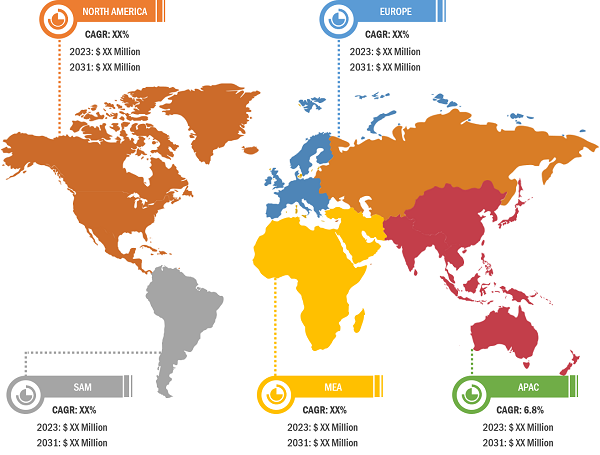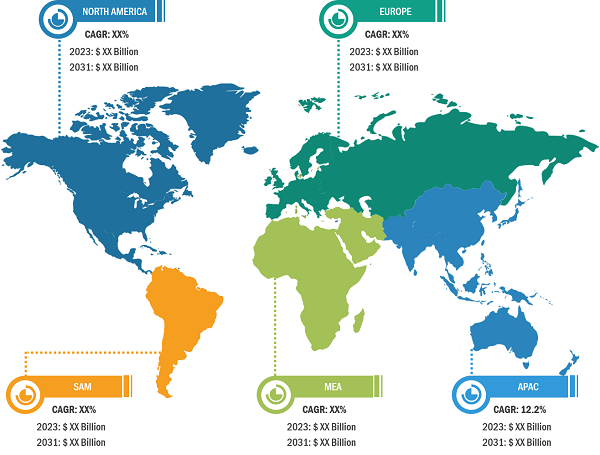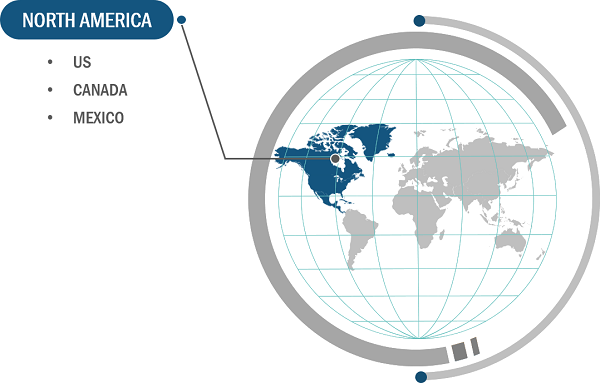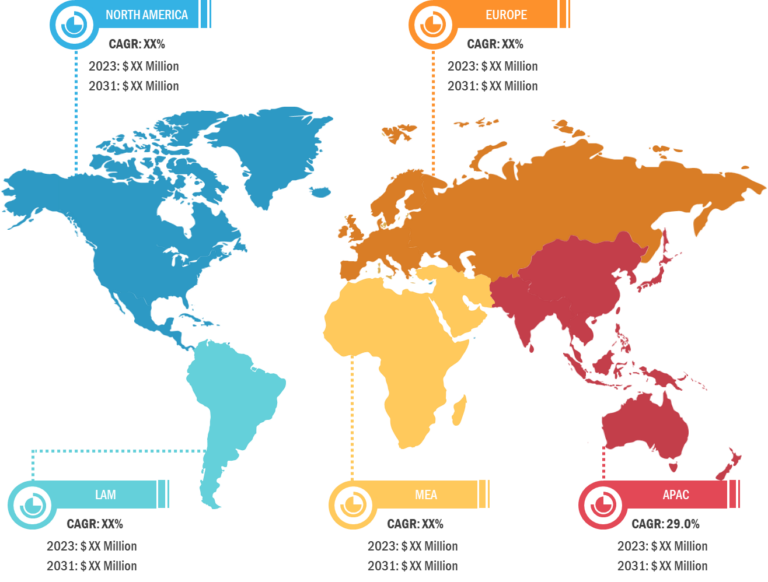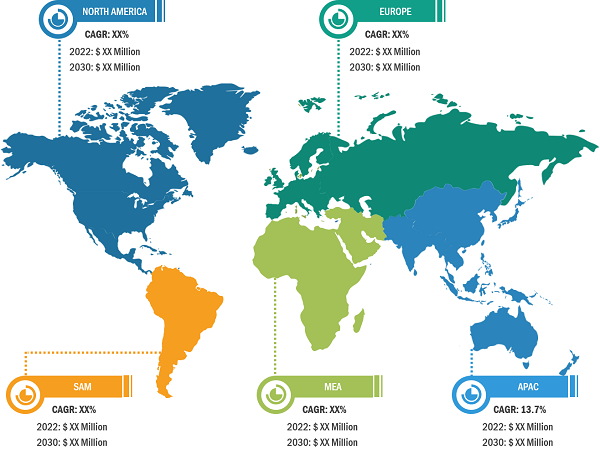
RF Front-End Chip Market
Increasing adoption of advanced wireless network infrastructure and rising adoption of smartphones, tablets, and other consumer electronics products are contributing to the growing RF front-end chip market size. However, high manufacturing cost of RF front-end chips and integration challenges of RF front-end chips hinder the RF front-end chip market growth.
Increasing Adoption of Wireless Network Infrastructure Drives RF Front-End Chip Market
In today’s technologically advanced world, wireless network infrastructure has become an indispensable part of daily life. Wireless networks allow for smooth connection and data transmission, from accessing the internet to using cloud-based applications, which is fueling the adoption of wireless networks. According to a Nokia estimate in February 2023, India’s investment in private wireless networks is likely to reach ~US$ 250 million by 2027. Moreover, in February 2024, the National Telecommunications and Information Administration (NTIA) of the Department of Commerce announced a US$ 42 million investment in open RAN and wireless technology development from the Public Wireless Supply Chain Innovation Fund. The increasing investment in wireless networks creates the need for RF front-end chips.
Wireless network infrastructure includes various physical devices and components that make up a computer network. This includes switches, routers, firewalls, and other networking equipment. RF front-end chips enable networks to accommodate more users and data flow at once. Improved user experience includes quicker data speeds, lower latency, and wider coverage. RF solutions are scalable and adaptive to meet a variety of network requirements and deployments, enhancing network flexibility. Advanced RF front-end chips are extremely efficient, consuming little power yet providing the necessary performance. This lowers operational expenses and environmental impact. Moreover, various players across the globe are indulging in the launch of RF front-end chips for the wireless network infrastructure. For example, in June 2023, Broadcom Inc. launched four RF front-end chips for powering routers that use Wi-Fi 7, a new wireless networking standard. Thus, the increasing adoption of wireless network infrastructure drives the RF front-end chip market growth.

RF Front-End Chip Market: Industry Overview
The RF front-end chip market is segmented on the basis of component, application, and geography. Based on component, the market is segmented into power amplifier, RF switch, radio frequency filter, low noise amplifier, and others. Based on application, the RF front-end chip market is segmented into consumer electronics, wireless communication, and others. The scope of the RF front-end chip market report is primarily segmented into North America (the US, Canada, and Mexico), Europe (Russia, the UK, Germany, France, Italy, and the Rest of Europe), Asia Pacific (South Korea, China, India, Japan, Australia, and the Rest of Asia Pacific), Middle East & Africa (South Africa, Saudi Arabia, the UAE, and the Rest of Middle East & Africa), and South & Central America (Brazil, Argentina, and the Rest of South & Central America).
In terms of revenue, North America is expected to have a significant RF front-end chip market share, followed by North America and Europe. The market in North America is segmented into the US, Canada, and Mexico. In terms of revenue, the US dominated the RF front-end chip market share. The widespread use of 5G technology has surged the demand for advanced RF front-end chips that can handle greater frequencies and bandwidths. North America is at the forefront of 5G deployment, driving the demand for specialist semiconductors. The RF front-end chip allows multi-gigabit speeds and low latency to unlock transformative 5G experiences. Various players across North America provide RF front-end chips for 5G smartphones. For example, in February 2022, pSemi Corporation, a Murata company specializing in semiconductor integration, expanded its millimeter wave (mmWave) RF front-end portfolio for 5G wireless infrastructure applications. The new pin-to-pin compatible products, which include three beamforming ICs and two up-down converters, provide the ability to exchange ICs for full IF-to-RF coverage over the n257, n258, and n260 bands. This modular approach, along with on-chip calibration and digital correction, enables system teams to streamline their design cycles and swiftly adapt to various active antenna design configurations. The proliferation of smartphones, tablets, wearables, smart home devices, and other connected gadgets drives the demand for efficient and dependable RF components in North America.
RF Front-End Chip Market: Competitive Landscape and Key Developments
Broadcom Corporation; Infineon Technologies AG; Microchip Technology Inc.; Murata Manufacturing Co., Ltd; NXP Semiconductors N.V.; Qorvo Inc.; Skyworks Solutions, Inc.; STMicroelectronics; TDK Corporation; and Texas Instruments Incorporated are among the key players profiled in the RF front-end chip market report. Several other major market players were studied and analyzed during this market research study to get a holistic view of the market and its ecosystem. The RF front-end chip market forecast provides detailed market insights, which help the key players strategize their growth. A few developments, as per the company press releases, are mentioned below:
- In June 2023, Qorvo announced the availability of the QPQ3509—the first bulk acoustic wave (BAW) 280 MHz band pass filter for the new 5G C-band in North America—and the QPB9850, a compact, highly integrated front-end switch/low noise amplifier (LNA) module for 5G base station RF front-ends. The C-band coverage of the QPQ3509 and high integration and compact design of QPB9850 together make the devices suitable for 5G small cell applications where size and weight are key metrics.
- In September 2023, Qorvo introduced two bulk acoustic wave (BAW) filters to support the ongoing global deployment of 5G base stations. The new QPQ3500 and QPQ3501 filters offer base station OEMs pin-compatible, 5G filter solutions that deliver lower insertion loss and superior out-of-band rejection than similar products. Pin compatibility allows the use of common printed circuit boards that support different frequency bands, eliminating costly board redesign and reducing time to market.

